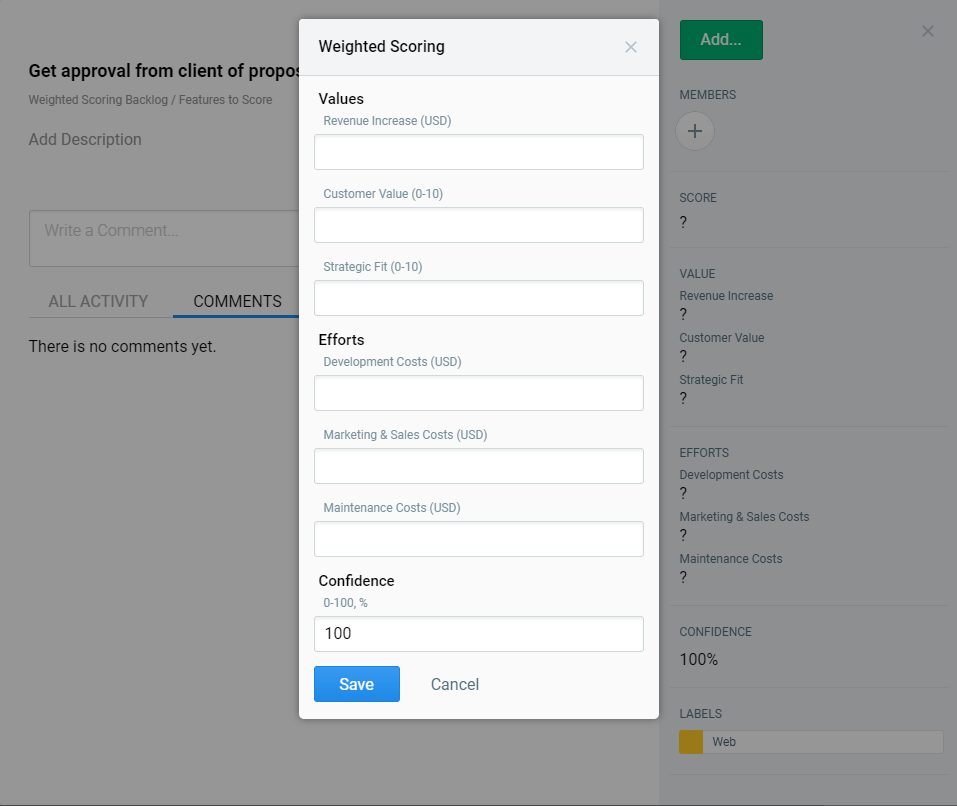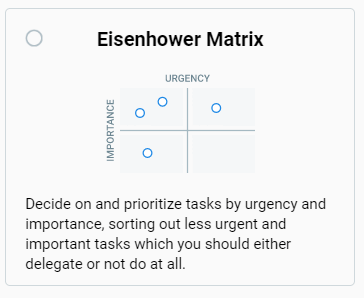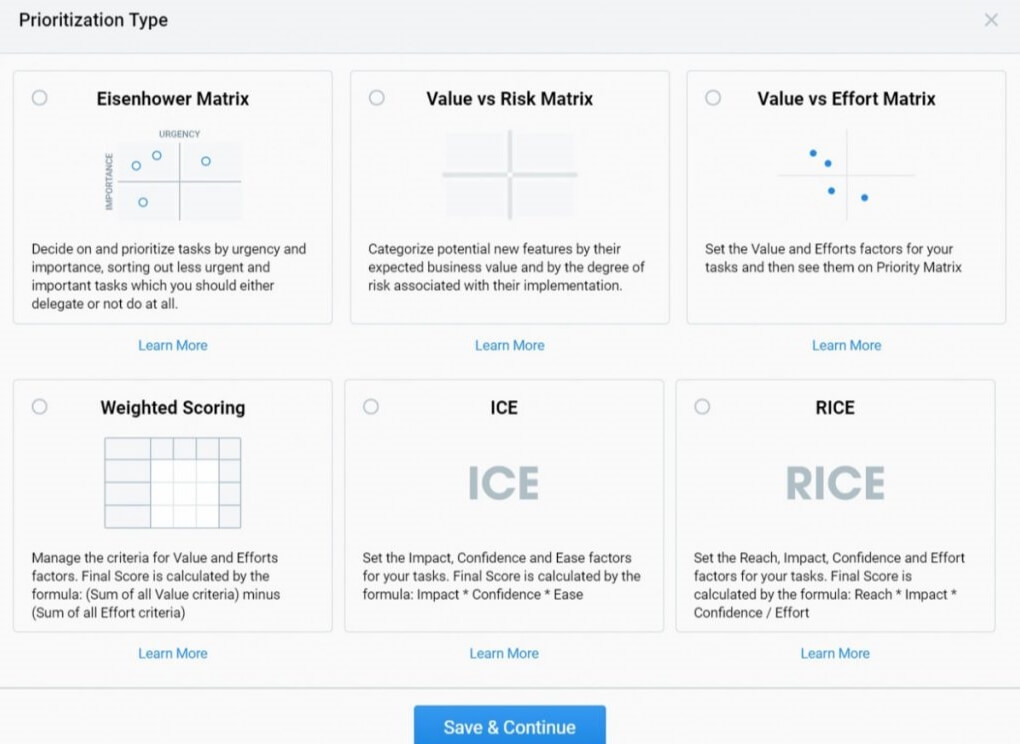The Meaning and Power of Weighted Decision Matrix in Business

Any business faces many different challenges that require making important decisions. You can make those decisions by just weighing the pros and cons. However, often they require a more thorough decision-making process and this is where a decision matrix comes to the rescue.
The decision matrix method was created by Stuart Pugh, professor and head of design at the University of Strathclyde. He designed this tool to help in selecting design alternatives. Nowadays the weighted decision matrix is a general decision-making aid, especially in business. It is aimed to reduce subjectivity to help you make a sound conclusion.
In this post, we describe the meaning of the weighted decision grid, its advantages, and examples, and show how to perform decision making analysis in an easy way. So, let’s get more about it!

What is a Weighted Decision Matrix?
A weighted decision matrix is a simple table that has an aim to help you define and visualize a winner between the different options. This is a powerful quantitative technique known all over the world.
The matrix evaluates your choices against a set of criteria you need to consider. Why is it weighted? There are actually several types of matrices but two main categories are weighted and unweighted.
- The unweighted matrix assumes that all criteria have the same importance.
- The weighted decision matrix applies different weights.
Now you will definitely be surprised because you will find out how many alternative names this matrix has. It is also known as the “Prioritization matrix”, “Weighted scoring matrix”, “Pugh matrix’, “Decision grid”, “Opportunity analysis”, “Problem selection matrix”, “Criteria rating form”, or “Problem selection matrix”.
A popular Eisenhower matrix is the type of decision-making matrix. However, it is mostly focused on identifying and ranking personal priorities, rather than key business decisions. Although some basic calculations are required, its concept and application are pretty simple and straightforward.
In order to create a weighted matrix, you should define what criteria matter in making your final decision. Then you have to assign a weight to each piece of criteria. It will allow prioritizing the factors that matter most. With this info, you will be able to mathematically identify which of your options looks better.
A powerful technique for making a right decision
The matrix looks particularly powerful when you have a number of good alternatives to choose from, and a variety of factors to take into account. This makes it a great tool to use in almost any critical decision where there is not an obvious, clear, and preferred option.
When should we use the decision matrix?
A simple decision matrix will be extremely helpful when you have:
- Many choices. For example, many ideas, features, projects, or campaigns.
- Multiple decision criteria to consider. For example, risk, costs, and customer value with similar or different levels of importance.
The decision making grid can help you not only to make complex decisions but also to prioritize tasks, solve problems and find arguments to defend a decision you’ve already made.
In case you are debating between a few comparable solutions and each of them has multiple quantitative criteria, then this is the ideal decision-making tool. It’s better to use it when you need to assess a situation from a logical point of view and have enough comparable variables to perform a weighted analysis.
The decision-making grid can be used on its own, or in tandem with other decision-making tools and frameworks.
How Do You Create a Decision Matrix? 7 Steps to Follow
1. Collecting different choices
It is a good idea to start by listing all the decision choices as rows. You should remember any relevant choices, as these rows will form the basis of your weighted decision matrix.
2. Defining influencing criteria
Initiate a brainstorming session to identify what criteria will affect those decisions. For example, cost, customer value, effort, and effectiveness. Then list these criteria as columns.
3. Estimating criteria
Estimate each criterion in the columns with the help of a number (the weight) to assess their impact and importance on your decision. Set a consistent rating scale for each one (for example, from 1 through 5). This will help you to calculate the relative importance of each criterion.
4. Evaluating each choice for each criterion
Now you have to rate your choices against the criteria. Apply the same rating system (from 1 through 5) and rate each criterion individually.
For example, if you think that your product has great business value, give it a 5. But remember that the values for each choice don’t need to be different. Equal weighting is ok. You need to be sure that higher values represent more preferable options for each value.
5. Calculating the weighted scores
At this stage, you have to do some simple multiplication. Multiply each of the choice ratings by their corresponding weight.
6. Calculating the total scores
Now it is time to sum it up for each of the choices and compare the total scores.
7. Making the final decision
You will get the choice with the highest score. It is usually the one you should prioritize.
Decision Matrix Optimization: Essential Tips on How to Improve It
Now you can easily work with a weighted decision matrix. However, before you go ahead, check the following tips that will help you avoid some pitfalls:
1. All unnecessary choices should be moved away
Identifying what attributes you think a winning choice requires is an essential step before creating your weighted decision matrix. Answering the questions like “Does it need to be a certain amount?” and “Does it need to align with a certain goal?” you will easily eliminate unnecessary options.
2. Each criterion should be rated separately
When you consider the first criteria, ignore the rest. It will help you to make the right decision and you will be able to make a more unbiased choice when it comes to the score by treating each criterion separately.
3. Your decision-making grid should always be kept up to date
The external environment, internal goals, and the company’s conditions can change quickly. That is why it is crucial to watch out for changes and update your weighted decision matrix regularly to keep priorities up to date.
What is a decision matrix example?
Let’s consider how a weighted decision matrix example can be applied in the real world. Your potential complicated decision may relate to a selection of a supplier for facilities management. In this example, we define that:
- Cost is the most critical factor in choosing a supplier. It gets a weighting of 5 as a very important factor.
- Service level and the way how it is to terminate the contract should circumstances change or things not be working out the way are the other factors that are not as important as cost. They will get a weighting of 4.
- Contract length and financial strength are the other factors we may consider.
The most important factor is cost, so we can expect that the company with the lowest cost may become our preferred option.
Hygger Prioritization Frameworks for Decision Making
Eisenhower Matrix in Hygger
The Eisenhower Matrix is one of the most popular types of decision-making matrices and a powerful prioritization method.
Applying this matrix, you evaluate tasks with Importance and Urgency. It is a commonly used approach as everyone can understand how urgent and important their tasks can be.
Its main idea is to determine and distinguish tasks on those that should be quickly completed and those that are important for your business or your customer. You may rate tasks with the Value/Efforts criteria.
You may find more about this prioritization method in our article Eisenhower Matrix for Prioritization.
Weighted Scoring in Hygger
The Weighted Scoring method in Hygger is an advanced version of Value/Effort rate. It is calculated with the additional criteria you add to Value and Effort rates.
By implementing Weighted Scoring you rate tasks with added criteria and then the final score is calculated by formula Value – Efforts (the sum of criteria you add).
It works in the following way. You create your own criterion with its own scale (0..10, general number, T-Shirt size, USD/EUR, yes/no). By default, you can use 3 additional criteria for both Value and Effort to rate tasks. Click on one of them to edit or delete it. On the pop up you can choose its name, description(so your team gets more details about the new criteria), date type(how you will rate), and Scoring Direction.
Now the new criteria will be added to your task. Then you evaluate features by these criteria, so each idea is calculated the final score.

The table view shows the list of all the ideas so you can choose the winners.

Conclusion
A weighted decision matrix is a great tool that can help you to plan, prioritize and communicate your decisions. It can empower you with a completely new angle to your strategic planning process.
Make sure you’ve considered all the relevant criteria before making a decision.
If you don’t want to create a decision matrix from scratch, try to explore the matrices offered by Hygger. With their help, you will be able to visually map your priorities on handy charts and transform them into an actionable roadmap.
FAQ
What is a weighted decision matrix?
A weighted decision matrix is a tool that helps you to compare alternatives with respect to multiple criteria of different levels of importance.
How do you create a decision matrix?
Brainstorm the evaluation criteria appropriate to the situation. Then discuss and refine the list of criteria. Reduce the list of criteria to those that the team believes are most important. After that, assign a relative weight to each criterion. Draw an L-shaped matrix and put the criteria and their weights as labels along one edge and the list of options along the other edge. Evaluate each choice against the criteria. Multiply each option’s rating by the weight and finally add the points for each option.
What are 3 types of decision making?
Three types of decision making process are extensive decision making, limited decision-making process, and routine decision making.
What is a grid analysis?
Grid analysis is an effective way to quickly decide between several options when many factors need to be considered.
What is a decision matrix used for?
In practice, the weighted decision matrix is frequently used in any sphere. For example, it can be applied when selecting appropriate software.
Why is the decision matrix important?
Documenting the decision making process can help avoid problems down the line with your evaluation, both by having clearly agreed upon roles for each stakeholder group that lay out how much weight each group’s input will carry. The matrix is important as you can apply it when you need to assess a situation from a logical viewpoint and you have enough comparable variables to weigh.
*pictures used are from pexels.com and unsplash.com (S.Shimazaki, L.Mai, P. Zimmerman)







